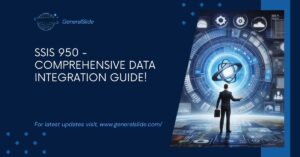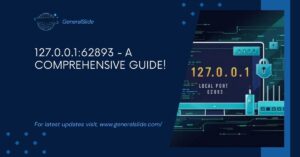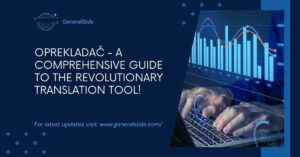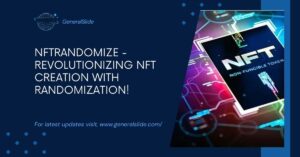Ssis 950 – Comprehensive Data Integration Guide!
SQL Server Integration Services (SSIS) has been a vital tool in data integration and transformation, primarily used for Extract, Transform, Load (ETL) tasks. As organizations become increasingly data-driven, the demand for powerful data management tools continues to rise. SSIS 950, the latest version of SQL Server Integration Services, delivers cutting-edge features, performance enhancements, and increased scalability, making it an essential component for businesses that manage vast amounts of data.
The SSIS 950 is a powerful tool for integrating data from various sources. It allows businesses to automate data transfers efficiently. SSIS 950 ensures smooth data management with its advanced features.
This article provides a comprehensive guide to SSIS 950, exploring its key enhancements, features, and real-world applications. Whether you’re a data engineer, IT professional, or business analyst, SSIS 950 offers powerful capabilities to streamline data integration workflows. Throughout this guide, we will explain the various aspects of SSIS 950 in easy-to-understand language, focusing on how it simplifies modern data management processes.
What is SSIS 950?
SSIS 950, short for SQL Server Integration Services 950, is a Microsoft-developed ETL tool designed to extract, transform, and load data from multiple sources into a centralized system. In today’s data-driven business landscape, managing diverse datasets is crucial for analytics, decision-making, and overall business intelligence. SSIS 950 builds upon the foundation of its predecessors by offering enhanced performance, scalability, and security for handling complex data integration tasks.
SSIS 950 also integrates seamlessly with Microsoft’s ecosystem, including SQL Server, Azure, and Power BI, making it a key player in modern data strategies. With advanced ETL capabilities, the tool enables businesses to efficiently manage and transform data for various purposes.
Core Enhancements in SSIS 950!
SSIS 950 introduces several key enhancements that improve the overall functionality and usability of the tool. These upgrades ensure that users can handle large datasets and complex workflows with ease. Let’s delve into some of the major improvements that SSIS 950 brings to the table:
1. Improved Performance and Scalability:
SSIS 950 is designed to manage large datasets more efficiently, with improvements in its execution engine and data flow components. By optimizing how data is processed and reducing bottlenecks, SSIS 950 enables faster ETL operations and better performance, even for large-scale data integration tasks.
2. Enhanced Data Flow Transformations:
SSIS 950 offers advanced data transformation capabilities, with several new transformations added and improvements to existing ones. Users can now perform more complex data manipulations and cleansing tasks, ensuring high-quality data integration.
3. Enhanced Control Flow Components:
Control flow, which defines the sequence of tasks in SSIS packages, has been enhanced in SSIS 950. New components provide greater flexibility, allowing users to design complex workflows and customize package execution to meet specific needs.
4. Improved Deployment and Management:
SSIS 950 simplifies the deployment and management of SSIS packages across different environments. The new version comes with features that allow users to streamline package management, ensuring consistency, accuracy, and efficiency when deploying to production.
Key Features of SSIS 950!
SSIS 950 provides a range of features that support efficient data integration, data transformation, and data loading operations. Some of the most important features include:
- Comprehensive ETL Capabilities:
SSIS 950 excels at Extract, Transform, Load (ETL) processes, making it easier to extract data from multiple sources, transform it as needed, and load it into a target destination. This makes it a robust solution for businesses looking to unify data from diverse systems. - Data Extraction from Multiple Sources:
One of the strengths of SSIS 950 is its ability to extract data from various sources, including relational databases like SQL Server, Oracle, flat files, and XML files. This flexibility is crucial for businesses managing diverse datasets. - Advanced Data Transformation and Cleansing:
With SSIS 950, users can perform complex data transformation tasks, such as data cleansing, sorting, aggregation, and validation. These capabilities ensure that the data being integrated is accurate, consistent, and ready for analysis. - Robust Error Handling and Logging:
SSIS 950 provides enhanced error-handling mechanisms that allow users to define specific error-handling strategies for ETL processes. Additionally, comprehensive logging ensures that users can track package execution and troubleshoot any issues that arise. - Integration with Microsoft Ecosystem:
SSIS 950, which is a component of the Microsoft SQL Server suite, easily interfaces with Power BI, Azure, and other Microsoft applications. This integration creates a powerful data management ecosystem that supports end-to-end data warehousing and analytics solutions.
Benefits of Using SSIS 950!
Using SSIS 950 in a business environment offers several benefits, particularly for companies with extensive data management needs. Some of the key advantages include:
1. Improved Data Quality:
The advanced data cleansing and transformation features in SSIS 950 ensure that businesses maintain high-quality data. By identifying and rectifying data inconsistencies, errors, and gaps, SSIS 950 helps ensure that data is accurate and reliable for decision-making.
2. Enhanced Business Intelligence:
SSIS 950 is integral to creating comprehensive business intelligence solutions. By extracting data from multiple sources and transforming it into a unified view, businesses can gain a thorough understanding of their operations and performance. The data can be further analyzed using tools like Power BI, providing valuable insights for strategic decisions.
3. Increased Efficiency and Cost Savings:
SSIS 950 automates data integration tasks, reducing the manual effort required to manage and transform data. This increased efficiency not only saves time but also reduces costs associated with manual data processing and integration.
4. Scalability for Growing Data Needs:
With its performance optimizations, SSIS 950 can scale to accommodate large datasets and complex workflows. This scalability is essential for businesses that are growing or dealing with increasingly complex data integration requirements.
Practical Applications of SSIS 950!
SSIS 950 is a powerful tool that is used in many industries for different purposes. It is especially valuable for organizations that rely on data to make decisions. One of the main uses of SSIS 950 is in data warehousing. It helps businesses collect data from different sources, transform it into a standard format, and load it into a data warehouse. This organized data can then be used for reports, analysis, and improving business strategies. Another key use of SSIS 950 is in ETL processes. It automates the steps of extracting, transforming, and loading data, making it easier to combine information from multiple systems.
SSIS 950 is also commonly used for data migration. It helps businesses move data between different systems or platforms without losing any information. This makes it a reliable option for companies switching systems. Additionally, SSIS 950 is great for data synchronization, ensuring that data in various environments stays consistent. This is especially helpful for businesses that work with hybrid or cloud systems.
Finally, SSIS 950 has strong tools for data cleansing and quality assurance, allowing companies to clean and validate their data. This ensures that the data being analyzed is accurate and reliable for making informed decisions.
How to Get Started with SSIS 950!
Getting started with SSIS 950 involves several steps, from installation to deployment. Below is a brief overview of the process:
1. Installation and Setup:
The first step is installing SQL Server Data Tools (SSDT) and setting up SSIS on your SQL Server instance. Microsoft provides detailed installation guides and support documentation to help users through this process.
2. Designing ETL Workflows:
After installation, users can begin designing their ETL workflows using the SSIS interface. The drag-and-drop functionality and pre-built components make it easy to create complex data workflows without extensive coding knowledge.
3. Testing and Deployment:
Before deploying ETL workflows, it’s essential to test them thoroughly. SSIS 950 provides tools for testing workflows, ensuring they function as expected. Once testing is complete, users can deploy their ETL processes to production environments.
4. Monitoring and Maintenance:
Regular monitoring and maintenance of SSIS 950 packages ensure that the system runs smoothly. By tracking package execution and addressing any issues, businesses can ensure the continuous performance of their ETL processes.
FAQ’s:
1. What is SSIS 950?
SSIS 950 is an advanced version of SQL Server Integration Services, designed for enhanced data integration, transformation, and loading (ETL) processes.
2. What are the key features of SSIS 950?
SSIS 950 offers improved performance, scalability, enhanced data transformations, and integration with Microsoft products like Azure and Power BI.
3. How does SSIS 950 improve data integration?
SSIS 950 streamlines ETL processes with faster execution, support for diverse data sources, and advanced error handling capabilities.
4. Can SSIS 950 handle large datasets?
Yes, SSIS 950 is built for scalability, making it capable of processing and managing large datasets efficiently.
5. Is SSIS 950 compatible with cloud environments?
Yes, SSIS 950 integrates with cloud platforms like Azure, enabling smooth data migration and integration between on-premises and cloud systems.
6. What types of data can SSIS 950 work with?
SSIS 950 supports various data sources, including relational databases, flat files, XML, and cloud-based data systems.
7. How does SSIS 950 benefit businesses?
SSIS 950 enhances data quality, improves efficiency, and integrates well with business intelligence tools, helping organizations make informed decisions.
Conclusion:
SSIS 950 is a powerful and versatile tool for modern data integration and transformation. Its comprehensive ETL capabilities, combined with enhanced performance and scalability, make it an invaluable asset for data-driven businesses. With SSIS 950, organizations can streamline their data management processes, improve data quality, and gain actionable insights from their data.
By leveraging the power of SSIS 950, businesses can enhance their business intelligence efforts, reduce manual data processing, and achieve more efficient decision-making. Whether you’re building data warehouses, migrating data, or synchronizing datasets, SSIS 950 offers the flexibility and scalability needed to meet modern data challenges.
In conclusion, SSIS 950 is not only an advanced data integration tool but also a key enabler for businesses aiming to optimize their data strategies and achieve their long-term goals.



























































Post Comment